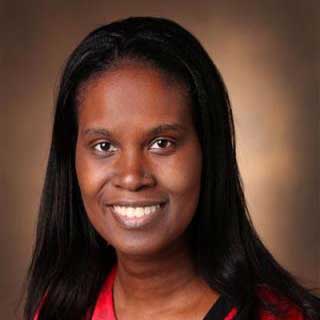Researchers at Vanderbilt University Medical Center have been working on ways to peel providers away from their computers. Computer tasks consume at least half the workday for many physicians and have been shown to erode patient trust in the clinic.
To help, researchers are adopting a particularly promising tool already found in our homes: voice assistants.
“Voice assistants will revolutionize the way people interact with the EHR,” said Yaa Kumah-Crystal, M.D., assistant professor of biomedical informatics at Vanderbilt. “It just makes sense to be able to ask for the information you need and get the information back.”
Pulling EHR Data
Kumah-Crystal developed a system that integrates Vanderbilt’s Epic EHR with Nuance’s artificial intelligence-based Dragon Medical Virtual Assistant technology. The result is VEVA, short for Vanderbilt’s EHR Voice Assistant.
VEVA can help pull details out of the EHR with simple voice commands. Having voice assistants in healthcare can also speed up and improve patient relationships.
“Structured data such as labs and medications – anything that is a discrete element – is easy to query,” Kumah-Crystal said. By saying “What was the last sodium?” for example, providers can engage VEVA and review past laboratory values. The prototype system currently responds using text rather than a voice of its own, which also helps ensure patient privacy.
The benchmark goal for VEVA is a response time akin to commercial natural language recognition systems (around 200 milliseconds). While it’s a challenge to meet that mark, researchers are using strategies such as prefetching and caching data to improve performance.
A Pilot Study
Kumah-Crystal is currently leading a two-month pilot study with 10 pediatric endocrinologists at Vanderbilt to see if VEVA makes it easier for physicians to keep their focus on patients – instead of EHR user interfaces.
At first, participating providers will use VEVA only to prep for patient interactions. “We know there are certain times when it’s going to be really efficient and effective to have information that you can query by voice. For example, it’s going to be useful to ask ‘What patients am I going to be seeing today?’” Kumah-Crystal said
Looking Ahead
Not only can the right resources and technology provide for better collaboration among physicians. The long-term goal of VEVA is to enhance patient-provider relationships even during appointments and rounds. “What I would love is to be hands-free, taking care of the patient, maintaining eye contact, having a conversation,” Kumah-Crystal said. “Nothing kills a patient’s confidence in physicians quicker than watching them struggle with technology.”
“What I would love is to be hands-free, taking care of the patient, maintaining eye contact, having a conversation.”
Kumah-Crystal envisions a time when providers could call orders into the air: “Let’s order a CBC” or “Let’s order a BMP” and not have to break away from conversations. She is also working on tools to parse information from free text in clinic notes, in addition to structured data.
“We’re trying to reimagine how we’re using the EHR so that it actually helps serve providers rather than being a burdensome, onerous platform,” she said. “The goal is to make it as natural as having an actual conversation with a really useful intern.”




